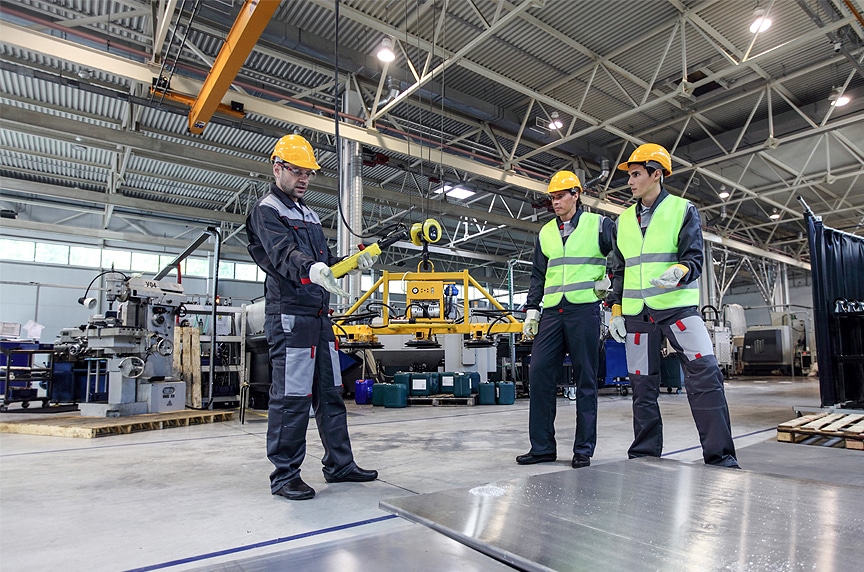Training Employees on Overhead Crane Operation

Employers’ Responsibilities in Training Employees on Overhead Crane Operation in Canadian Workplaces
Overhead cranes play a crucial role in various industries across Canada, providing the means to lift, move, and position heavy loads safely and efficiently. However, the operation of overhead cranes comes with inherent risks, including potential for accidents, injuries, and property damage if not performed correctly. To mitigate these risks and ensure the safety of workers, employers have a legal and ethical responsibility to provide comprehensive training to employees involved in overhead crane operations. In this article, we will explore the importance of employers’ responsibilities in training employees on the safe operation of overhead cranes in Canadian workplaces, highlighting key considerations, regulations, and best practices.
- Legal and Regulatory Framework:
- In Canada, workplace safety is governed by federal, provincial, and territorial regulations, including occupational health and safety legislation. These regulations establish legal requirements for employers to provide adequate training and supervision to workers involved in hazardous activities, such as operating overhead cranes.
- Federal regulations, such as the Canada Labour Code, and provincial/territorial regulations, such as the Occupational Health and Safety Act (OHSA) in Ontario or the Workers Compensation Act in British Columbia, outline specific requirements for training programs, certification, and competency assessment related to overhead crane operation.
- Identification of Hazards and Risks:
- Before training employees on overhead crane operation, employers must conduct a thorough assessment of workplace hazards and risks associated with crane operations. This includes identifying potential sources of danger, such as overhead obstructions, electrical hazards, load instability, and crane malfunctions.
- By understanding the specific hazards present in their workplace, employers can tailor training programs to address these risks effectively and empower employees to recognize and mitigate hazards during crane operations.
- Development of Training Programs:
- Employers are responsible for developing and implementing comprehensive training programs that cover all aspects of overhead crane operation, including equipment inspection, pre-operation checks, load handling, and emergency procedures.
- Training programs should be developed in consultation with industry experts, equipment manufacturers, and regulatory authorities to ensure alignment with best practices and regulatory requirements.
- Competency Assessment and Certification:
- Following completion of training programs, employers must assess the competency of employees through practical evaluations and written assessments. Competency assessments should verify that employees possess the knowledge, skills, and abilities required to operate overhead cranes safely and effectively.
- Employees who demonstrate competency should receive certification or documentation of training completion, which serves as evidence of their qualification to operate overhead cranes in the workplace.
- Ongoing Refresher Training:
- Overhead crane operation is a skill that requires regular practice and reinforcement to maintain proficiency and stay current with industry standards and best practices. Employers should provide ongoing refresher training to employees at regular intervals, as well as following significant changes in equipment, procedures, or regulations.
- Refresher training sessions serve as opportunities to reinforce key concepts, address any gaps in knowledge or skills, and update employees on new developments or safety measures related to overhead crane operation.
- Supervision and Oversight:
- In addition to providing training, employers must ensure adequate supervision and oversight of overhead crane operations to monitor compliance with safety procedures and intervene in the event of unsafe practices or conditions.
- Qualified supervisors should be present during crane operations to provide guidance, support, and corrective action as needed, particularly for less experienced operators or complex lifting tasks.
- Documentation and Record-Keeping:
- Employers are required to maintain accurate records of employee training and certification related to overhead crane operation. Documentation should include details of training programs, competency assessments, certification records, and any refresher training sessions attended by employees.
- Proper documentation serves as evidence of regulatory compliance and can be valuable in demonstrating due diligence in the event of workplace inspections, audits, or incidents involving overhead cranes.
Employers play a critical role in ensuring the safety of overhead crane operations in Canadian workplaces through comprehensive training programs, competency assessment, and ongoing supervision. By fulfilling their legal and ethical responsibilities to train employees on the safe operation of overhead cranes, employers can minimize the risk of accidents, injuries, and property damage, while promoting a culture of safety and accountability in the workplace. Through proactive risk management, adherence to regulatory requirements, and continuous improvement of training practices, employers can create safer work environments and protect the well-being of their employees.
Categories
- Aerial Lift
- ATV Training
- Bear Awareness
- Chainsaw Training
- Confined Space
- Defensive Driving
- Forklift Training
- Lockout Tagout
- Online Safety Training
- Overhead Crane
- Pipeline Construction Safety Training
- Propane Handling
- Safety Training Benefits
- Scissor Lift
- Skid Steer Training
- Space Awareness
- TDG
- Telehandler Forklift
- Traffic Control
- Train the Trainer course
- Training Course
- Uncategorized
- WHMIS
- Workplace Harassment and Violence Preventiont
